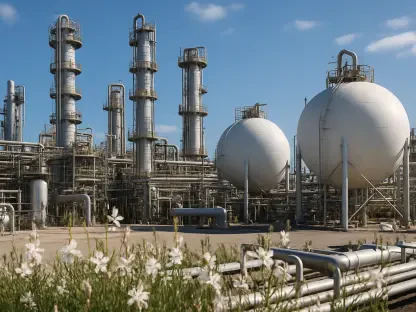Located near Lineville, Alabama, the R.L. Harris Hydroelectric Project has been a pivotal source of electricity since its original license was issued in 1973. Now, over five decades later, the project is undergoing its first relicensing. The Federal Energy Regulatory Commission (FERC) issued a Final Environmental Impact Statement (EIS) for the 142.5-megawatt project managed by Alabama Power Company. This comprehensive evaluation aims to address and mitigate environmental concerns related to peaking operations, specifically noting the effects on the Tallapoosa River’s ecology. The assessment encompasses various aspects such as erosion, water quality, and public safety, among others, which hold significant importance for the river and its ecosystem.
Environmental Concerns and Mitigation Measures
One of the chief concerns in the EIS is the erosion of private property downstream from Harris Dam. Peaking operations have resulted in fluctuating water levels, which contribute to shoreline erosion. Further complicating the issue are the cold temperatures and low dissolved oxygen levels stemming from the dam, adversely affecting aquatic species in the Tallapoosa River. Streamflow alterations disrupt the natural spawning and feeding patterns, impacting the river’s biodiversity. Additionally, peaking flows, with their inconsistent volume, velocity, and frequency, have been highlighted for their potential in causing flooding, particularly during wet years, thereby posing risks to surrounding communities and recreational activities.
To mitigate these issues, FERC staff recommended measures within the Staff Alternative plan, which adopts most of Alabama Power’s proposals while integrating mandatory conditions and suggestions from state and federal agencies. This holistic approach aims to balance power generation with ecological sustainability. Key recommendations include configuring operations to stabilize flow regimes, enhancing the dissolved oxygen levels, and implementing erosion control measures. These adjustments are designed to not only preserve the river’s environmental health but also safeguard the interests of landowners, recreational users, and the wider community that depends on this vital waterway.
Comprehensive Project Overview and Implications
The Harris Project encompasses extensive federal land administered by the U.S. Bureau of Land Management and areas within the James D. Martin-Skyline Wildlife Management Area. The project infrastructure includes a dam, spillway, powerhouse, and a significant 9,870-acre reservoir, Lake Harris, which along with the 7,411 acres of adjacent project lands, supports diverse uses. These lands are designated for natural areas, recreational spaces, and hunting, making the relicensing process all the more critical for local stakeholders.
On November 23, 2021, Alabama Power submitted their relicensing application, which was meticulously supplemented through the subsequent year, showcasing their commitment to addressing various environmental and public concerns. The enhancements suggested in the EIS include modifications to better manage aquatic and terrestrial resources, as well as threatened and endangered species. Moreover, the plan emphasizes improving recreational and cultural resources, reflecting a concerted effort to harmonize power generation with environmental and social stewardship. These comprehensive measures illustrate a forward-looking strategy that seeks to integrate energy needs with ecological preservation.
Future Considerations and Management Strategies
Near Lineville, Alabama, the R.L. Harris Hydroelectric Project has been providing reliable electricity since it was first licensed in 1973. Now, more than fifty years later, it is undergoing its initial relicensing process. The Federal Energy Regulatory Commission (FERC) recently issued a Final Environmental Impact Statement (EIS) for the 142.5-megawatt project, which is managed by Alabama Power Company. This thorough report aims to address and mitigate various environmental concerns specifically related to peaking operations and their impact on the Tallapoosa River’s ecosystem. The review includes significant issues such as erosion control, water quality maintenance, and public safety measures. Evaluating these factors is crucial for preserving the river and its surrounding environment, ensuring that the project continues to operate sustainably. The relicensing process is essential for balancing the need for energy production with the protection of natural resources and maintaining the health of the local ecology.









